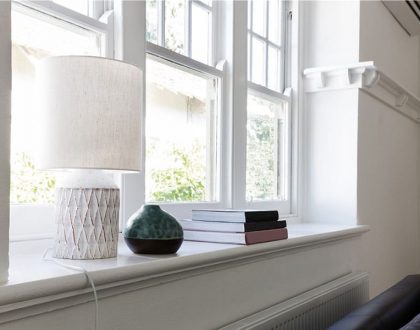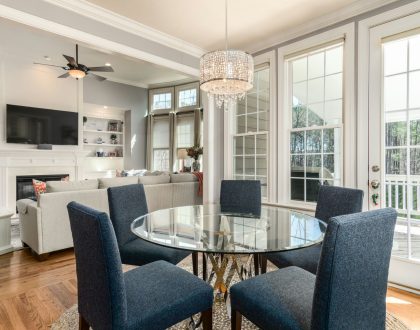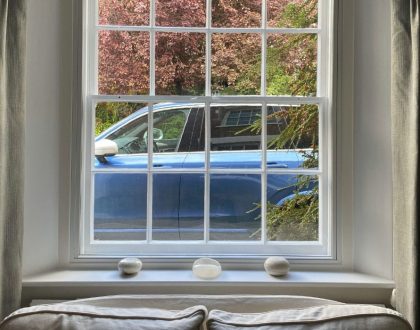How Much Does Secondary Glazing Cost?

It never pays to compromise on quality. Sam Vimes, Terry Pratchett’s fictitious captain of the City Watch, proposed that paying for more expensive boots will keep your feet dry in the long run, and that if you buy cheap boots it’ll cost twice as much in the same amount of time. While Vimes may not be real, the theory of ‘boots economics’ is very sound.
Cost is a big factor in making any decision. You want to know how much it’ll cost versus how much you’ll save on your energy in the long run. Even if the primary reason you’re looking for secondary is for the acoustic and security benefits, it helps to know how much does secondary glazing cost.
What influences the secondary glazing cost?
The price of adding secondary glazing to your home is affected by many factors. Naturally, the overall price will vary depending on the number of units that you need to buy, but the cost per window also varies.
Each unit is bespoke and made to measure, so in our experience, one size never fits all! This also means that the answer to ‘how much does it cost?’ has to be broken down. Let’s explore the elements that influence secondary glazing costs.
Dimensions of the Window
Windows vary massively in size. Consider the difference between the big beautiful windows in your living room for letting the light in and the smaller windows in your bathroom for keeping prying eyes out.
For most home windows, we see sizes ranging from 100 to 320 centimetres in width and 100 to 180 centimetres in height, though this can vary. In our experience, windows can be practically any dimension, and we’ve fitted some incredible shapes and sizes for secondary glazing.
The larger the window, the more glass it requires, and the more framing materials it needs. In other words, the bigger the window the more it costs.
Installation Method
If you hire a professional to install your secondary glazing, there’ll be additional costs to consider. The labour cost will average at around £20 per hour, though this can vary across the country. For some, this is an ideal choice as it saves you the time and effort required to install it yourself.
For the determined DIYers out there, you’ll have no trouble with our units. Our secondary glazing kits are made to produce professional level results at affordable prices. Each unit is made to measure, all holes pre-drilled and ready to go. Ultimately, it’s a choice of time versus money, and there’s no wrong answer here.
Type of Secondary Glazing
Our recommended type of secondary glazing will vary depending on the type of primary window you have installed. Likewise, personal preferences and style choices play their part: they’re your windows so they should look nice for you.
- Horizontal Sliders – Our most popular choice across commercial, residential, heritage and listed buildings. Featuring smooth horizontal sliding and twin brush seals. Available in 2,3,4,or 5 panel versions.
- Vertical Sliders – Perfectly designed to work with traditional sash windows. Self-supporting panes allow the window to rest in any position. Also, available with a tilt-in variation.
- Hinged Casement – The ultimate in unobtrusive design. Available with options of side and base openings. Tilt and turn allows for easy ventilation, maintenance and cleaning.
- Lift Out Windows – Our most cost-effective solution, perfect for situations where limited access to your primary window is needed. Lift the unit out as and when you need to.
- Fixed Inserts – Part of our Vision Series. Insert units are best for doors, small windows or anywhere with little space to attach a panel.
- Bespoke Windows – For windows of different shapes and sizes, we can create the perfect secondary glazing that provides all the benefits without detracting from its original features.
Quality: Don’t settle for less
The quality and provider of the secondary glazing also influence the price. Bringing it back to ‘boots economics’, there are a whole range of cheaper products available, such as acrylic secondary glazing. These options are cheaper than glass secondary glazing, but they are incredibly lacking in terms of thermal efficiency, acoustic benefits and overall durability.
With Clearview, we provide only top quality, durable products. We have such faith in our product that every unit comes with a 10-year guarantee.
How much does secondary glazing cost?
In our most recent quarter our average unit ordered cost £390 each. As explained, this can vary based on all the factors above. This may sound like a lot initially, until you compare it with the price of installing a double-glazed window: £600-£1800 per window!
Keep in mind that this is the average cost for a uPVC double-glazed casement window. If there’s anything more complex, or you choose to use more durable materials, the cost quickly shoots up.
The most astounding part about double glazing costing this much is that we outperform it in every way. Our thermal efficiency is almost twice as good, our exterior noise reduction is miles ahead, and our durability is second to none.
Is secondary glazing worth the investment?
With secondary glazing, the benefits—enhanced heat retention, sound insulation, security, and reduced visible condensation—justify the investment.
For a tailored quote, Clearview’s Fast Quote system provides an easy way to receive an estimate based on your specific details, with a 25% discount for online orders.
Hopefully we have answered the question of how much does secondary glazing cost, but for personalised advice and a more accurate cost estimate, contact Clearview directly through email at [email protected] or by phone at 0114 294 5018. Our team can guide you through the secondary glazing cost, the product options, installation methods, and what suits your property best, offering a clearer idea of the investment needed for your windows.
Recommended Posts

Magnetic Secondary Glazing Or DIY Kits?
12/06/2025


